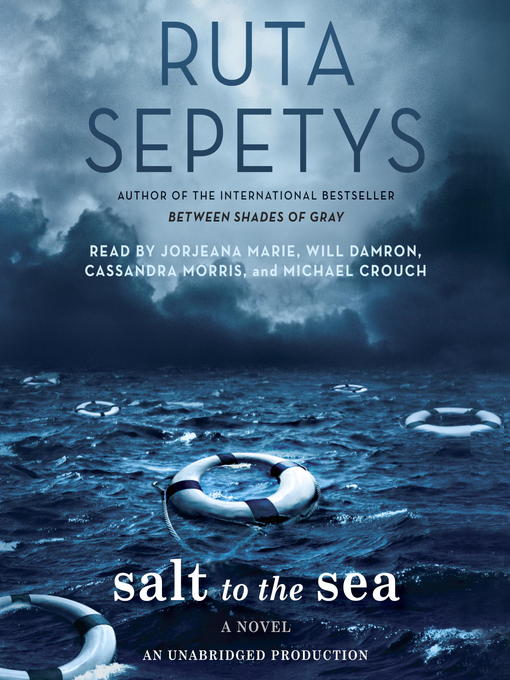A Review of Salt to the Sea
From Ruta Sepetys, the author of Out of the Easy and Between Shades of Grey (not to be confused with Fifty Shades of Grey), comes another young-adult novel: Salt to the Sea.
Set in Germany in the winter of 1945, the story centers on the infamous S.S. Wilhelm Gustloff disaster. The ship was part of an evacuation of 2 million people from Germany, called Operation Hannibal. The main objective of the plan was to escape from the advancing Allied and Russian forces. The ship was hit with three Russian torpedoes on Jan. 30, 1945. It was estimated that over 9,000 people were killed in the disaster. About five thousand of those killed on board that fateful day were children.
The novel focuses on this terrible time in history through the eyes of four teenagers. Joana is a medic-in-training who was granted citizenship to Germany after fleeing Lithuania, but she wallows in the guilt of possibly condemning her cousin, Lina (the main character of Between Shades of Grey), to death at the cost of her freedom.
Florian is an art replicator apprentice. He is on the run from the Nazis after stealing a piece of valuable artwork from them. Emila is a pregnant teenager who wants nothing more than to live her life in peace in Poland, her homeland. She cannot return there due to constantly hiding from the Nazis and Russian soldiers.
Alfred is a Nazi sailor who is considered an outcast in his own faction. Throughout the novel, he tries so hard to prove himself and be appealing to everyone that he ends up pleasing nobody. All of them were there when the ship was unexpectedly struck by the Russian Submarine S-13, and the result leaves their lives changed forever.
The most fascinating part of the novel is the time that Sepetys takes to establish the characters before the disaster even happens. These individuals are very established from the first four chapters; their first sentences end with the three words “is a hunter.” This phrase brings a connection between these characters before they even meet each other.
Through these introductions, these characters can be seen as human beings. Each character goes through an arc that leaves them different than they were in the first four chapters. They can be seen as not entirely likeable but most certainly relatable.
Even if there are characters who do not have names when they board the ship, the overwhelming nature is still clear. Sepetys had done years of research near where the disaster happened in Germany for writing this book, and it does show. The numbers of who were boarding the ship at that time were over the capacity the ship was able to hold, and Sepetys writes it in a way that readers can feel the heat and stress from the gravity of the situation. When the ship is attacked by the torpedoes, the readers can feel the impact of what just happened as if they were actually there.
According to historians, as well as Sepetys’s author’s note, the death tolls of those that died in the disaster was higher than that of those who died on the Titanic and the Lusitania combined. Perhaps the saddest part about this tragedy is that it is not as heavily discussed as the previously mentioned disasters. This novel is the reason that history should be seen as important at any point in life.
As Sepetys writes in her note at the end of the novel, “Every nation has hidden history, […] preserved only by those who experienced them. […] History divided us, but through reading we can be united in story, study, and remembrance.”
Salt to the Sea is not only a good recommendation for book clubs, it is the novel that should be read in English classes as well as History classes. It has strong characters and a strong story, but it leaves questions that should be open for discussion.

